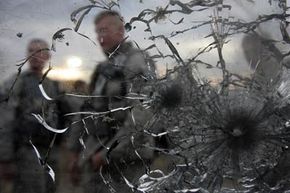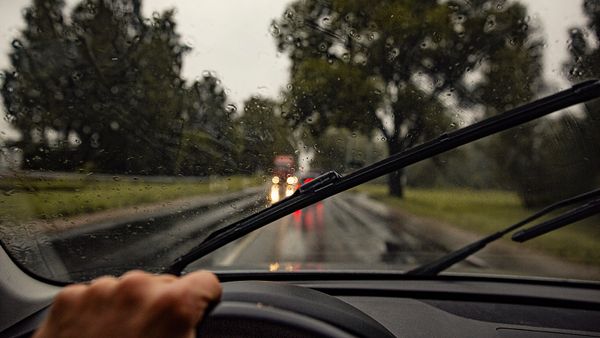At first glance, bullet-resistant glass looks identical to an ordinary pane of glass, but that's where the similarities end. An ordinary piece of glass shatters when struck by a single bullet. Bullet resistant glass is designed to withstand one or several rounds of bullets depending on the thickness of the glass and the weapon being fired at it. So, what gives bullet-resistant glass the ability to stop bullets?
Different manufacturers make different variations of bullet-resistant glass, but it is basically made by layering a polycarbonate material between pieces of ordinary glass in a process called lamination. This process creates a glass-like material that is thicker than normal glass. Polycarbonate is a tough transparent plastic -- often known by the brand name Lexan, Tuffak or Cyrolon. Bullet-resistant glass is between 7 millimeters and 75 millimeters in thickness. A bullet fired at a sheet of bullet-resistant glass will pierce the outside layer of the glass, but the layered polycarbonate-glass material is able to absorb the bullet's energy and stop it before it exits the final layer.
Advertisement
The ability of bullet-resistant glass to stop a bullet is determined by the thickness of the glass. A rifle bullet will collide with the glass with a lot more force than a bullet from a handgun, so a thicker piece of bullet-resistant glass would be needed to stop a rifle bullet as opposed to a handgun bullet.
There is also one-way bullet-resistant glass available, which has one side able to stop bullets, while the other side allows bullets to pass through it unaffected. This gives a person being shot at the ability to shoot back. This type of bullet-resistant glass is made by laminating a brittle sheet of material with a flexible material.
Imagine a car equipped with this one-way bullet-resistant glass. If a person outside the car shoots a bullet into the window, the bullet would strike the brittle side first. This brittle material would shatter around the point of impact and absorb some of the energy over a large area. The flexible material then absorbs the remaining energy of the bullet, stopping the bullet. A bullet fired from inside the same car would easily pass through the glass because the bullet's force is concentrated on a small area, which causes the material to flex. This causes the brittle material to break outwards, allowing the bullet to pierce the flexible material and strike its target.
Advertisement


